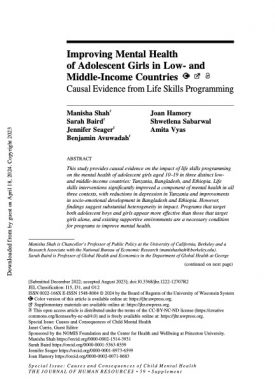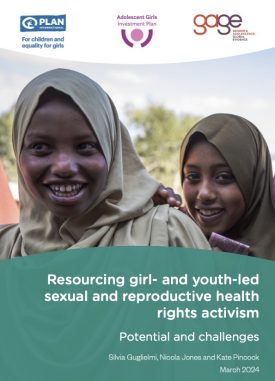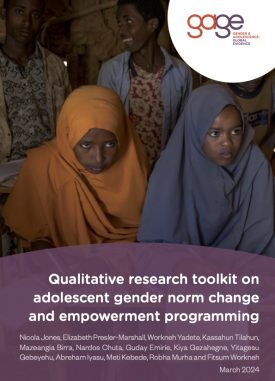This brief summarises the findings of GAGE’s formative qualitative work in Bangladesh—which took place in 2016 in two communities, one rural (Rangpur) and one urban (Adabor). Both have a variety of adolescent programming from the NGO BRAC. Based on individual and group interviews with almost 275 people, approximately 175 of whom were adolescents between the ages of 10 and 15, we found that despite significant recent progress, adolescents’-especially girls’- capabilities continue to be truncated. We also found that adolescent programming has positive impacts on young people’s capabilities.
Our research found, for example, that while girls’ overall enrolment rates now exceed those of boys, high drop-out rates—driven by girls’ time poverty and pressure on them to marry– mean that girls are still less likely than boys to complete secondary school. Indeed, we found that despite parents’ protestations that child marriage is declining, many believe that girls are ready for marriage by the age of 12. We also found that girls had very little information about puberty, that their worlds grew smaller as they grew older—because their families restricted their movement in order to ensure their safety and sexual purity, and that their access to socialisation, voice and agency continues to lag behind those of boys.
Our research suggests that Bangladeshi girls need access to programming that provides them with opportunities to interact with peers and role models, learn life skills, and grow their aspirations and voice. Parents and broader communities need programming that directly addresses gender norms. Critically, adolescent programming needs to better reflect the needs of today’s adolescents, providing girls and boys with the tutorials that will help them succeed in school and teaching them about the risks and opportunities of the modern world.
Suggested citation
Camfield, L., Rashid, S. F. and Sultan, M. (2017) Exploring Bangladeshi adolescents’ gendered experiences and perspectives. Report. London: Gender and Adolescence: Global Evidence. (https://www.gage.odi.org/publication/bangladeshi-adolescents-gendered-experiences-and-perspectives/)


